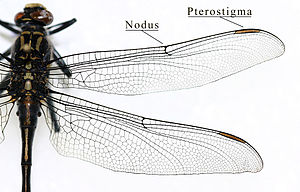Well, I think there is more to it than weight relief pockets, or triangled structures like the Wellington.
I believe the idea behind isogrids is to "replicate" the lines of force on a stiffened flat sheet. You orient the fibers along the grid to resist tension. So, being carbon fiber so good in tension, if you align them, the plate only fails by compression, with little bending.
You can "earn" an order of magnitude in strength with this kind of alignement, at least in civil engineering structures (which, I concede, are more or less static).
Ideally, you would identify the main lines of force and reinforce the material just there.
You can use flat shells in compression and fibers laid by a robot to adsorb tension.
The shell is kept rigid by this tension fibers, because their tensile strength is very high (carbon) so it doesn't buckles easily. This lack of buckling gives you a very efficient shell in compression, like so many building designs made possible by this kind of construction since the 30's. As in all reinforced concrete structures, the reinforcing "fibers" are invisible, they are the steel bars that are embedded in the beams.
Pier Luigi Nervi, Hangar, Orvieto, 15 cm width beams using flat shell "theory", cover made of prefabricated blocks in pure compression.

I know the human bones grow along lines of force, as another example (Wolff's law).
Arrgh, I cannot find the picture I would like to show: it depicts femur head "lines" (small ridges you can see on the surface of bones) and the same image with the calculated stress lines. Both coincide. Here you have a video of fringe pattern analysis of lines of force in an isogrid, boring as hell, but this is the idea behind flat shells structures as opposed to skyscrapers (that work on the principle of separated parallel planes, as JTom describes).
[youtube]
http://www.youtube.com/watch?v=PUqUzj1wz10[/youtube]
I just wondered if F1 designers use this as an alternative.
It's not opposite to sandwiched design, but a complement or better yet, an alternative.
In my opinion, watching nature, a possibly superior one, as the bones of mammals (strong fiber directionality) seem superior to oyster shells (sandwiched with alignement in the general direction of stresses) in weight/resistance. Frankly, every time you really want to carry the load to the limit, you start to reinforce locally, along lines of force.

A question: I think that in sandwiched structures, the core is not there to space tha "load plates": it also carries shear forces, it's not simply for spacing. The core shear is maximum at the "edges" or support points. Am I wrong?










